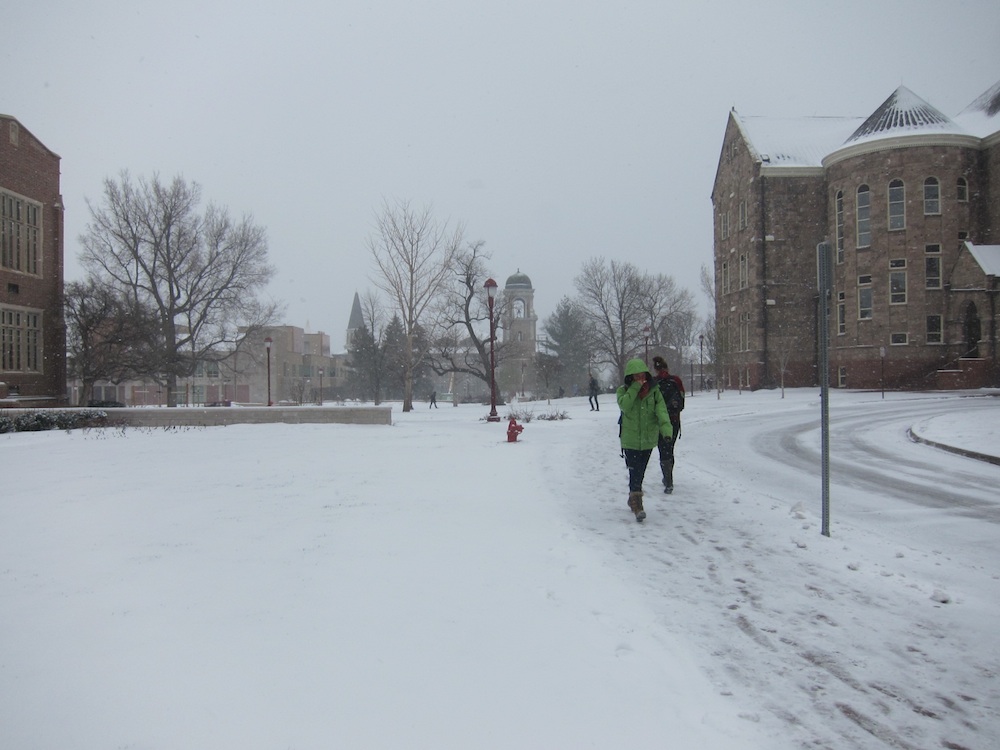
Spring Storm Sends Temps (and Snow) Falling in Colorado

DENVER — Colorado residents said a temporary goodbye to warm spring weather today (April 9), waking to scenes of ice and blowing snow.
A storm system blew through the eastern Rockies and the Great Plains last night (April 8), bringing with it strong winds and precipitous drops in temperature. Denver reached a high of 71 degrees Fahrenheit (21.6 degrees Celsius) yesterday afternoon; by 7:45 a.m. CST today, temperatures had dropped 55 degrees to just 16 F (-8.8 C).
Much of that drop occurred within hours. According to Accuweather, temperatures plummeted 26 degrees in two hours in Denver yesterday evening.
Forecasters haven't yet declared any records from the storm, but temperatures are a little colder than normal for an early spring system, said Kyle Fredin, a meteorologist at the National Weather Service (NWS) office in Boulder.
"The record low temperature for today is 12 degrees, so we have a chance to get that later tonight," Fredin told OurAmazingPlanet. Denver may have also set a new record low maximum temperature overnight yesterday with a high of only 22 F (-5.5 C) since midnight, he said. Temperatures were in the single digits in Wyoming this morning and hovered in the teens throughout northeastern Colorado. [Extreme Weather Facts: Quiz Yourself]
Despite the whiplash from warm to cold, this storm is no spring surprise, Fredin said. As warm air moves north in early spring, it collides with cooler northern air masses, causing storms at mid-latitudes.
"This is very typical for April, especially early to mid-April," Fredin said.
Sign up for the Live Science daily newsletter now
Get the world’s most fascinating discoveries delivered straight to your inbox.
The storm stretches from eastern Nevada all the way into Kansas. As of 9 a.m. MST, between 3 and 6 inches (7.6 to 15.2 centimeters) of snow had fallen on the Denver metro area, Fredin said, with a full day of snow expected ahead. According to the National Weather Service, an additional 3 to 6 inches could accumulate before snow tapers off by evening.
The moisture for the storm could help provide some drought relief for the region. Colorado and much of the Great Plains are experiencing moderate to severe drought, reaching extreme and even exceptional levels in some areas.
"We'd like a lot of water content with this snow," Fredin said. "We'll know more tomorrow about how much it gave us, but definitely, a much-needed storm."
Follow Stephanie Pappas on Twitter and Google+. Follow us @livescience, Facebook & Google+. Original article on LiveScience.com.

Stephanie Pappas is a contributing writer for Live Science, covering topics ranging from geoscience to archaeology to the human brain and behavior. She was previously a senior writer for Live Science but is now a freelancer based in Denver, Colorado, and regularly contributes to Scientific American and The Monitor, the monthly magazine of the American Psychological Association. Stephanie received a bachelor's degree in psychology from the University of South Carolina and a graduate certificate in science communication from the University of California, Santa Cruz.









